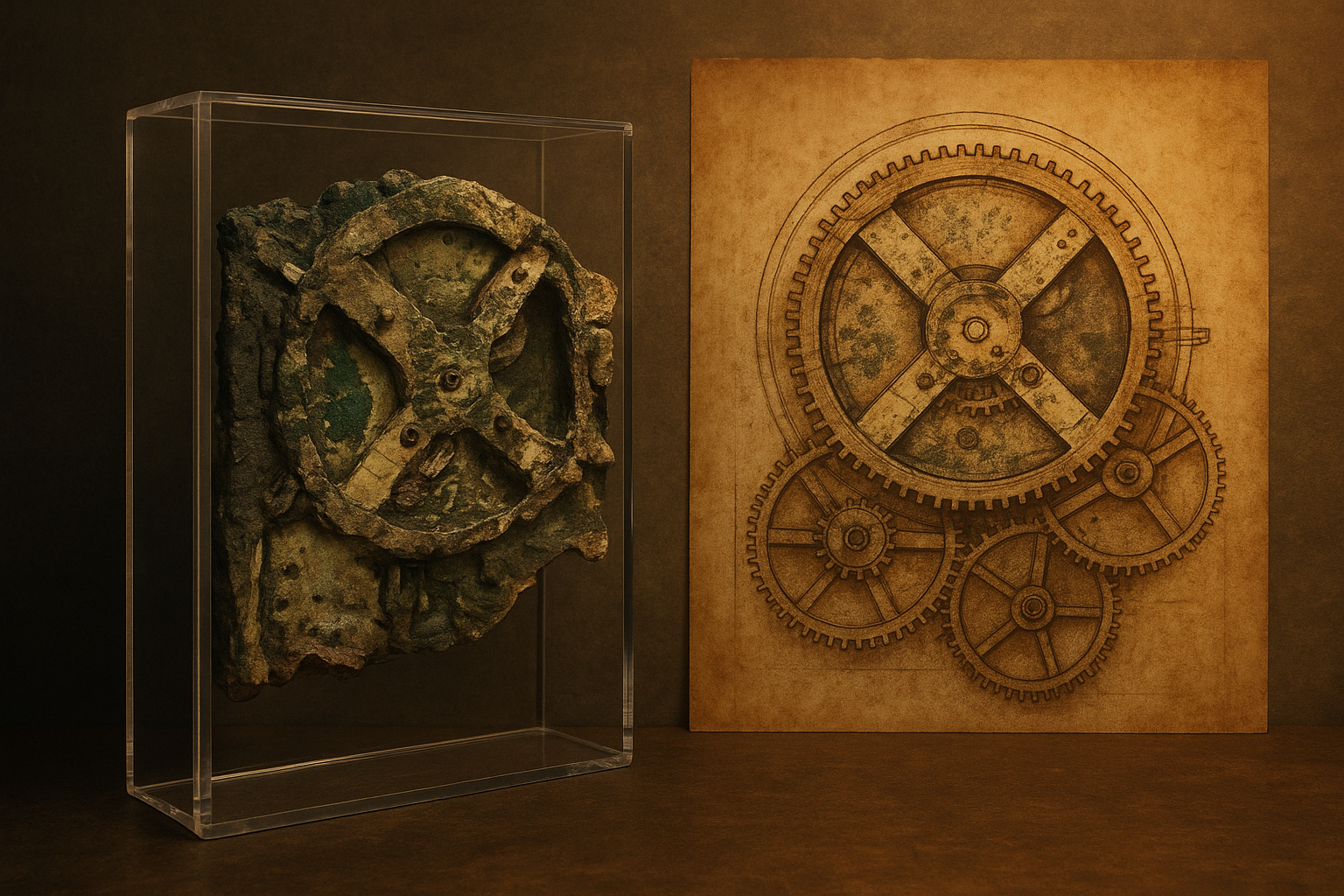This website is in the works! Things will get fixed with time.
Imagine stumbling upon a device so advanced that even modern scientists are still unraveling its secrets over a century after its discovery. This is exactly the case with the Antikythera Mechanism, often dubbed the world’s first analog computer—a relic from ancient Greece that has baffled archaeologists, historians, and engineers alike. Found in a shipwreck off the coast of the Greek island Antikythera in 1901, this extraordinary artifact appears to defy everything we thought we knew about ancient technology.
After years of exhaustive research, X-ray imaging, and mechanical reconstruction, experts have confirmed that the Antikythera Mechanism is an incredibly complex geared device designed to track astronomical cycles with remarkable precision. But the big question remains: how did ancient Greeks, often portrayed as primitive compared to modern standards, create such a sophisticated machine? And why was this knowledge seemingly lost for nearly two millennia?
In this article, we’ll dive deep into the enigma of the Antikythera Mechanism, exploring the history, technology, and mystery behind what many now agree is the most astonishing artifact from the ancient world.
Discovery: From Shipwreck to Scientific Marvel
The story begins in 1900 when sponge divers exploring a Roman-era shipwreck near Antikythera Island stumbled upon fragments of bronze gears and corroded plates unlike anything they had seen before. These artifacts were sent to the National Archaeological Museum in Athens, but it wasn’t until decades later that the true nature of the device began to emerge.
The first detailed study came in the 1950s, when British science historian Derek J. de Solla Price recognized the fragments as parts of a highly sophisticated mechanical calculator. He proposed that the device could predict the motions of the sun, moon, and possibly the planets.
Since then, advances in imaging technology—including 3D X-ray tomography—have allowed scientists to peer inside the corroded remains, revealing dozens of interlocking bronze gears and inscriptions describing complex astronomical cycles.
A Mechanical Marvel: What the Mechanism Does
The Antikythera Mechanism is essentially an ancient Greek analog computer designed to predict celestial events. It could track the solar year, lunar phases, eclipses, and even the complicated cycle of the planet Venus. Here are some of the astonishing functions it performed:
- Solar and Lunar Calendars: The mechanism mapped the 365-day solar calendar alongside the 354-day lunar calendar, allowing synchronization of solar and lunar years—an essential tool for ancient astronomers and priests.
- Eclipse Prediction: Using the Saros cycle (approximately 18 years), the device could forecast solar and lunar eclipses, complete with probable locations where eclipses would be visible.
- Planetary Cycles: Some parts of the mechanism suggest it could also model the irregular orbits of the five known planets at the time: Mercury, Venus, Mars, Jupiter, and Saturn.
These capabilities imply an understanding of celestial mechanics centuries ahead of their time, embedded into a single, portable device.
The Technology Behind the Enigma
What sets the Antikythera Mechanism apart is not only what it could calculate but how it did so. Its design incorporates a sophisticated arrangement of gears with precise tooth counts, epicyclic gearing (gears rotating on other gears), and differential gearing. This level of mechanical complexity was thought to have only appeared in medieval clocks over a thousand years later.
John Seiradakis, a Greek astrophysicist involved in the recent studies, described the mechanism as “a sophisticated astronomical computer” that “would have required a level of technological skill previously not thought to have existed at that time.”
The sheer precision of the gears and inscriptions suggests the device was built by highly skilled artisans, probably connected with astronomical schools in ancient Greece. The mechanisms’ creators combined detailed astronomical knowledge with engineering prowess, merging science and art in a way that remains breathtaking.
Why Does This Matter? Challenging Historical Narratives
The Antikythera Mechanism is more than just a fascinating artifact—it challenges our fundamental assumptions about the technological capabilities of ancient civilizations. For decades, historians believed that complex mechanical technology only emerged in Europe during the Renaissance.
However, this device predates even the earliest known mechanical clocks by over a millennium, suggesting that ancient Greeks possessed knowledge of gearwork and computing far beyond what was previously believed.
In his book Decoding the Heavens, Jo Marchant writes:
“The Antikythera Mechanism reveals an ancient world where technology and astronomy were intimately linked, and where the boundaries of science and engineering were far more advanced than we had imagined.”
The disappearance of such technology from history’s record—possibly due to war, loss of knowledge, or the fragility of mechanical devices—poses intriguing questions. Was the Antikythera Mechanism a unique creation, or did it represent a broader tradition of mechanical science that has since vanished?
The Lost Tradition: What Else Could Have Existed?
Despite its uniqueness, the Antikythera Mechanism is not entirely an isolated anomaly. Some ancient texts hint at the existence of automata and intricate mechanical devices. For instance, Hero of Alexandria described various mechanical inventions, including early steam engines and programmable machines, centuries later.
This raises the possibility that a tradition of mechanical engineering existed in the ancient Mediterranean world, but much of this knowledge was lost during the turbulent centuries that followed the fall of the Roman Empire.
Historian Michael Wright, who built a working replica of the mechanism, noted:
“This device is the tip of the iceberg. It suggests that the ancients were experimenting with mechanical computation, and it’s likely that many other devices have been lost to history.”
Modern Relevance: Lessons From the Antikythera Mechanism
The rediscovery and study of the Antikythera Mechanism in modern times offer more than historical insight; it provides inspiration and cautionary tales. It reminds us that human innovation is not always linear and that sophisticated knowledge can be lost and rediscovered multiple times across millennia.
In an age dominated by digital technology, the Antikythera Mechanism’s purely mechanical approach to computation reveals the enduring creativity and ingenuity of human beings. It also urges us to value and preserve technological knowledge, ensuring it is not lost to future generations.
Final Thoughts: A Glimpse Into the Past—and Future?
The Antikythera Mechanism remains one of the greatest mysteries of ancient technology. Its discovery has forced historians and scientists to rewrite parts of the history of technology, recognizing that ancient civilizations may have been far more advanced than we ever imagined.
As research continues, we may yet uncover more secrets hidden in its intricate gears and inscriptions. For now, the Antikythera Mechanism stands as a symbol of human curiosity, the quest for knowledge, and the timeless desire to understand the cosmos.
Whether you view it as the pinnacle of ancient Greek ingenuity or as evidence of lost advanced technology, the Antikythera Mechanism invites us to look beyond conventional history and embrace the mysteries that still await discovery.






